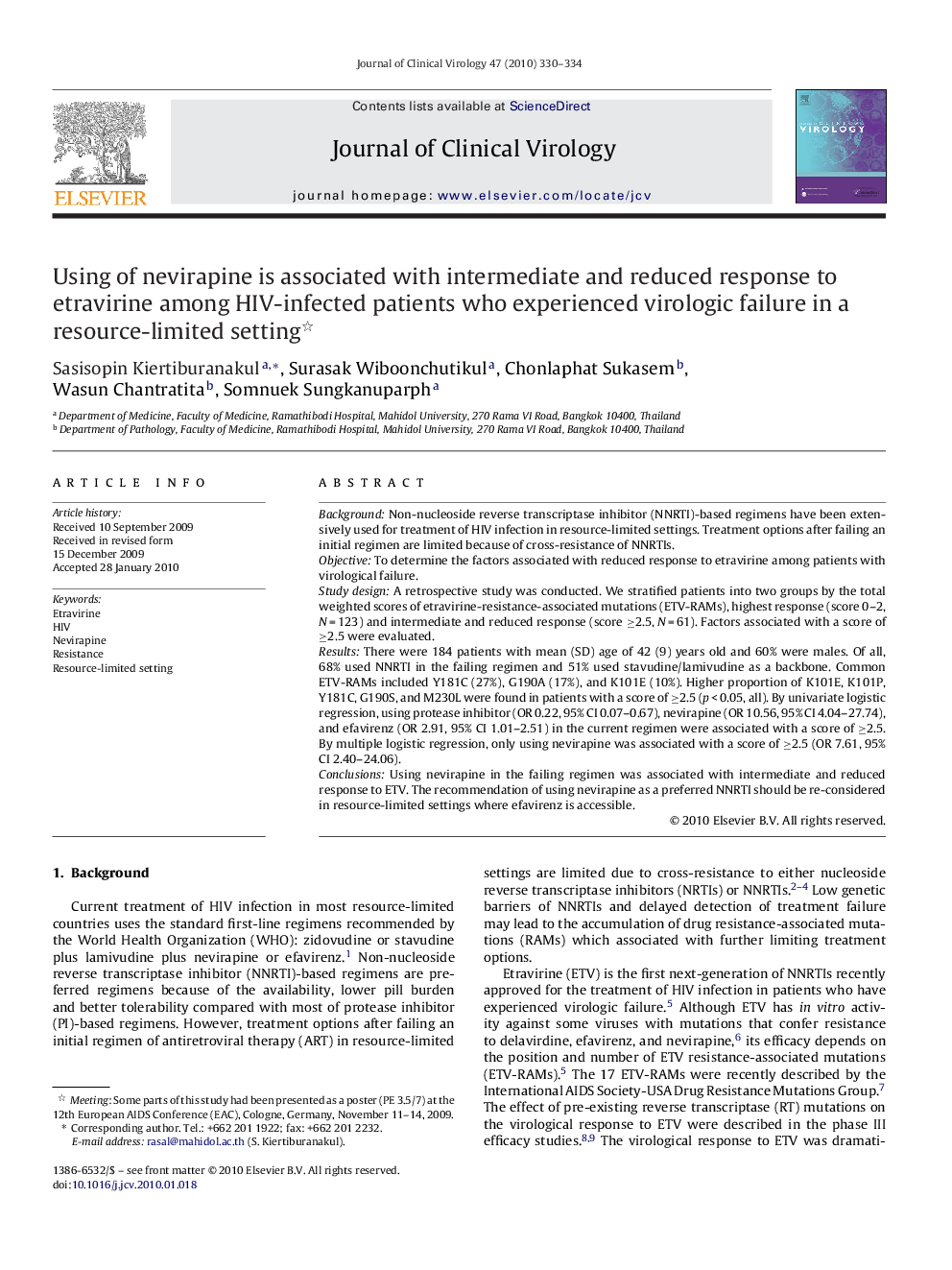| Article ID | Journal | Published Year | Pages | File Type |
|---|---|---|---|---|
| 3369618 | Journal of Clinical Virology | 2010 | 5 Pages |
BackgroundNon-nucleoside reverse transcriptase inhibitor (NNRTI)-based regimens have been extensively used for treatment of HIV infection in resource-limited settings. Treatment options after failing an initial regimen are limited because of cross-resistance of NNRTIs.ObjectiveTo determine the factors associated with reduced response to etravirine among patients with virological failure.Study designA retrospective study was conducted. We stratified patients into two groups by the total weighted scores of etravirine-resistance-associated mutations (ETV-RAMs), highest response (score 0–2, N = 123) and intermediate and reduced response (score ≥2.5, N = 61). Factors associated with a score of ≥2.5 were evaluated.ResultsThere were 184 patients with mean (SD) age of 42 (9) years old and 60% were males. Of all, 68% used NNRTI in the failing regimen and 51% used stavudine/lamivudine as a backbone. Common ETV-RAMs included Y181C (27%), G190A (17%), and K101E (10%). Higher proportion of K101E, K101P, Y181C, G190S, and M230L were found in patients with a score of ≥2.5 (p < 0.05, all). By univariate logistic regression, using protease inhibitor (OR 0.22, 95% CI 0.07–0.67), nevirapine (OR 10.56, 95% CI 4.04–27.74), and efavirenz (OR 2.91, 95% CI 1.01–2.51) in the current regimen were associated with a score of ≥2.5. By multiple logistic regression, only using nevirapine was associated with a score of ≥2.5 (OR 7.61, 95% CI 2.40–24.06).ConclusionsUsing nevirapine in the failing regimen was associated with intermediate and reduced response to ETV. The recommendation of using nevirapine as a preferred NNRTI should be re-considered in resource-limited settings where efavirenz is accessible.
